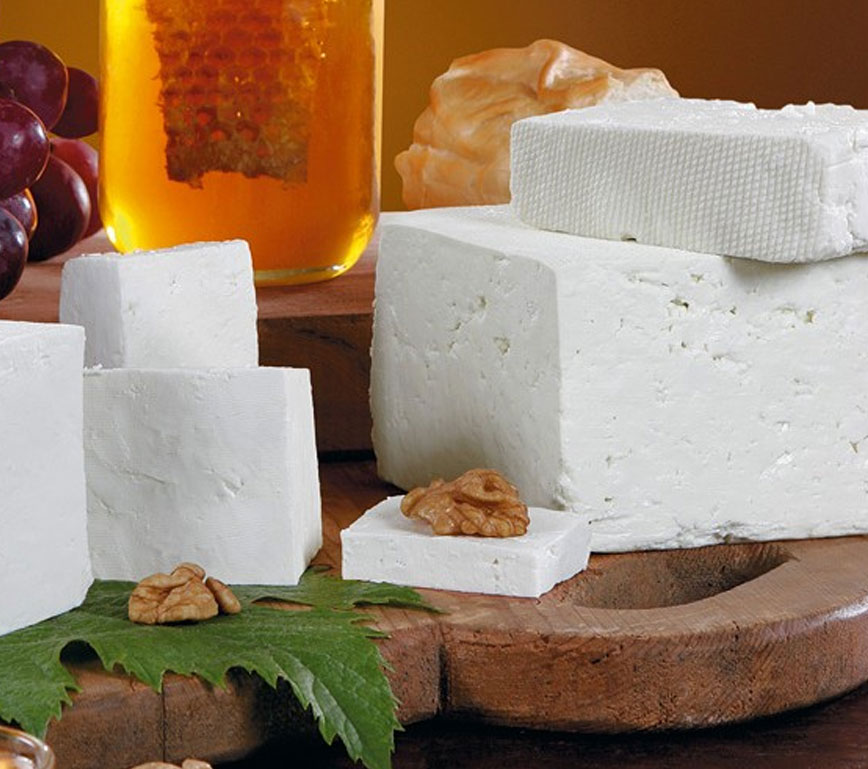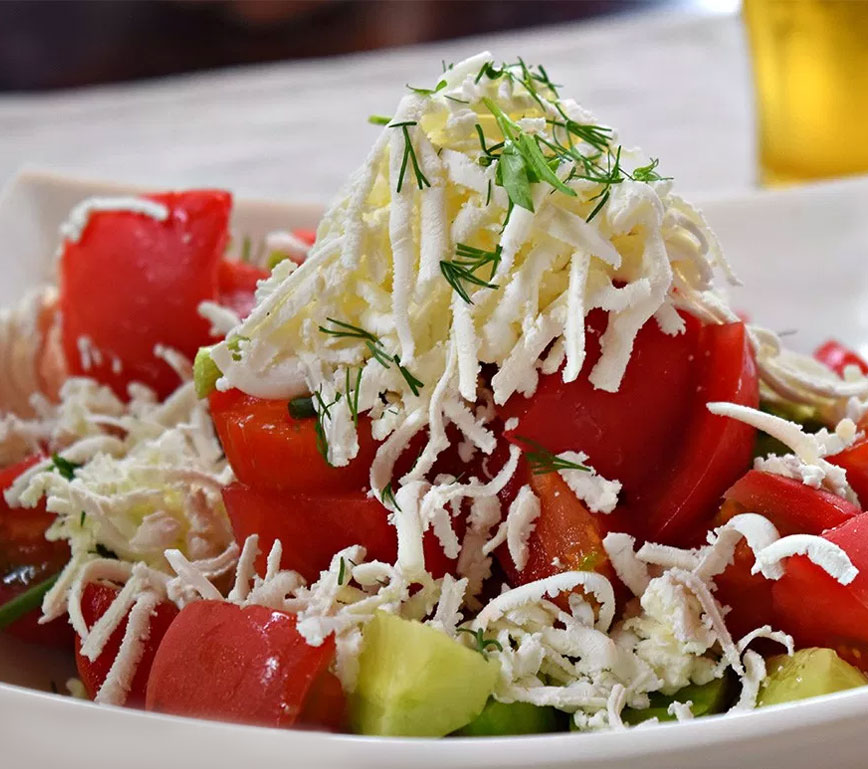BULGARIAN WHITE CHEESE
What is Bulgarian White Cheese?
There are certain criteria that define the Bulgarian white cheese.
First is the milk.
Milk in Bulgaria is different compared to that in other countries. Lactobacillus Bulgaricus is something that makes Bulgarian dairy products unique, and the bacteria are present in Bulgarian yoghurt and cheese. As it is known that yogurt originates from Bulgaria, people must know that the white cheese is also a traditional Bulgarian product. A Bulgarian national standard on cheese is imposed since 2011.
The products, offered by Eva’s shop are produced as per Bulgarian state standard from fresh pasteurized cow’s, goat’s or sheep’s milk with addition of yeast, salt and unique Bulgarian culture. After that they are passed through a ripening period of minimum 45 days at temperature of 10-12˚Celsius. No vegetable fats and vegetable proteins added.
Traditional dishes using Bulgarian white cheese are:
Salads:
“Shopska” salad with tomatoes, bell peppers, cucumbers, onions and white cheese.
Tomatos with cheese are a traditional light salad during the summer.
Eggs:
Fried eggs and omelets with cheese.
Pasta:
For breakfast, you can make macaroni or flat noodles (Bulgarian: "yufka") with cheese and sugar.
Pastry:
The traditional banitsa and other kinds of pastry are also made with this cheese.
Also Bulgarian white cheese is consumed as an appetizer.
Many Balkan and other cheeses are similar to (but not the same as) Bulgarian white cheese, and are known by various names. The local consumers of each country are usually well aware of the differences between the various white cheeses. Part of the differences are that the specific breeds of sheep and goats used in each region are different and the food they consume may also possess specific regional characteristics that affect the taste and texture of each type of cheese.

